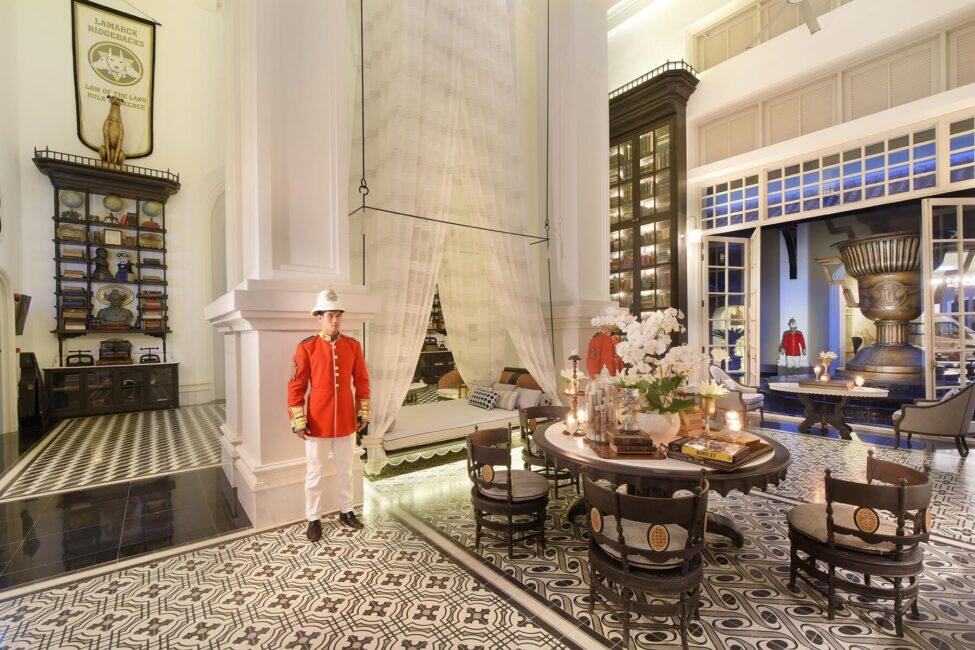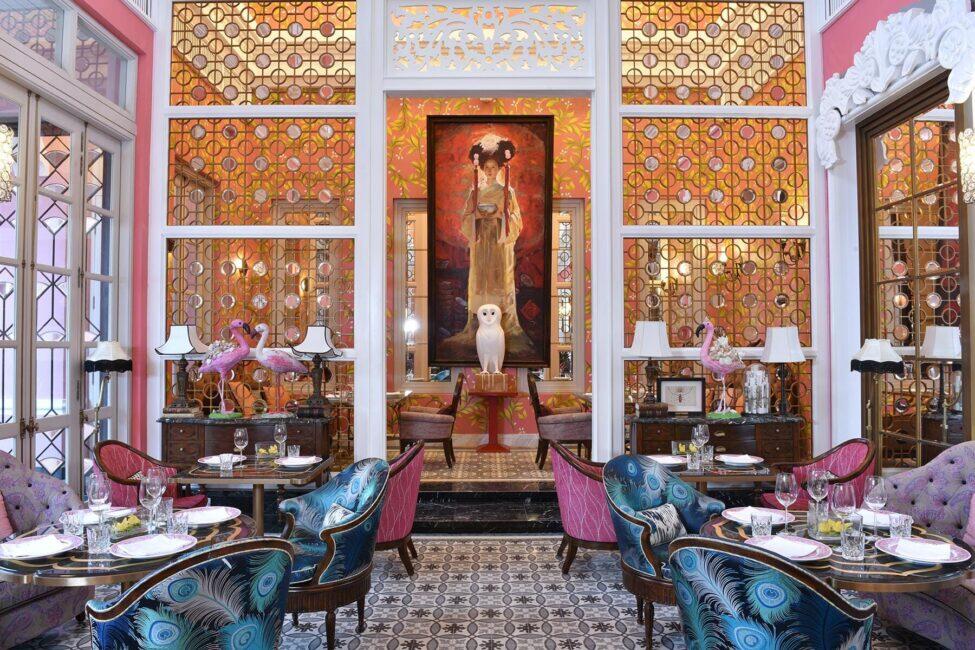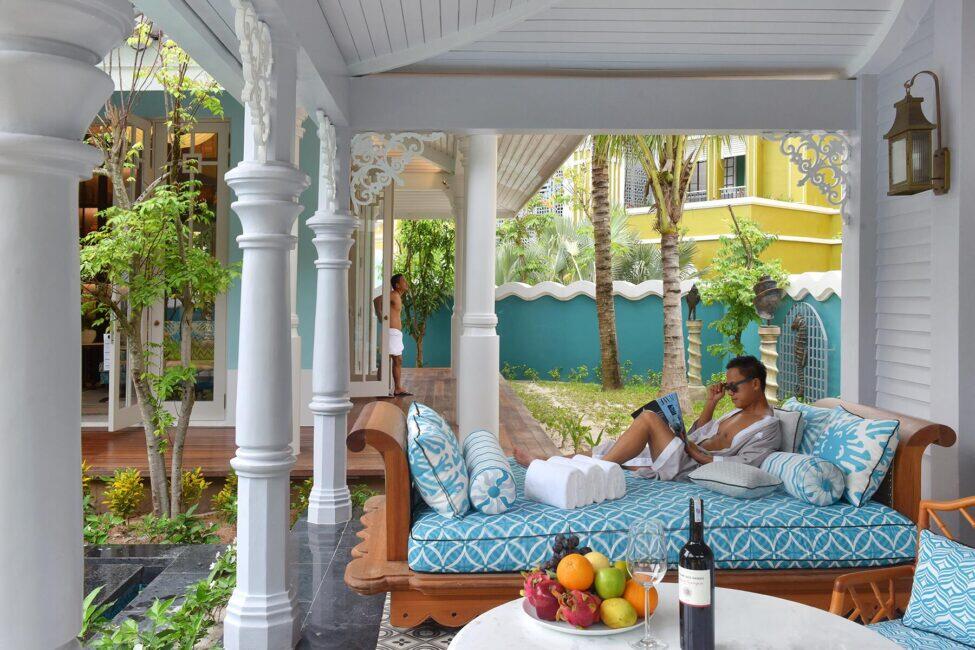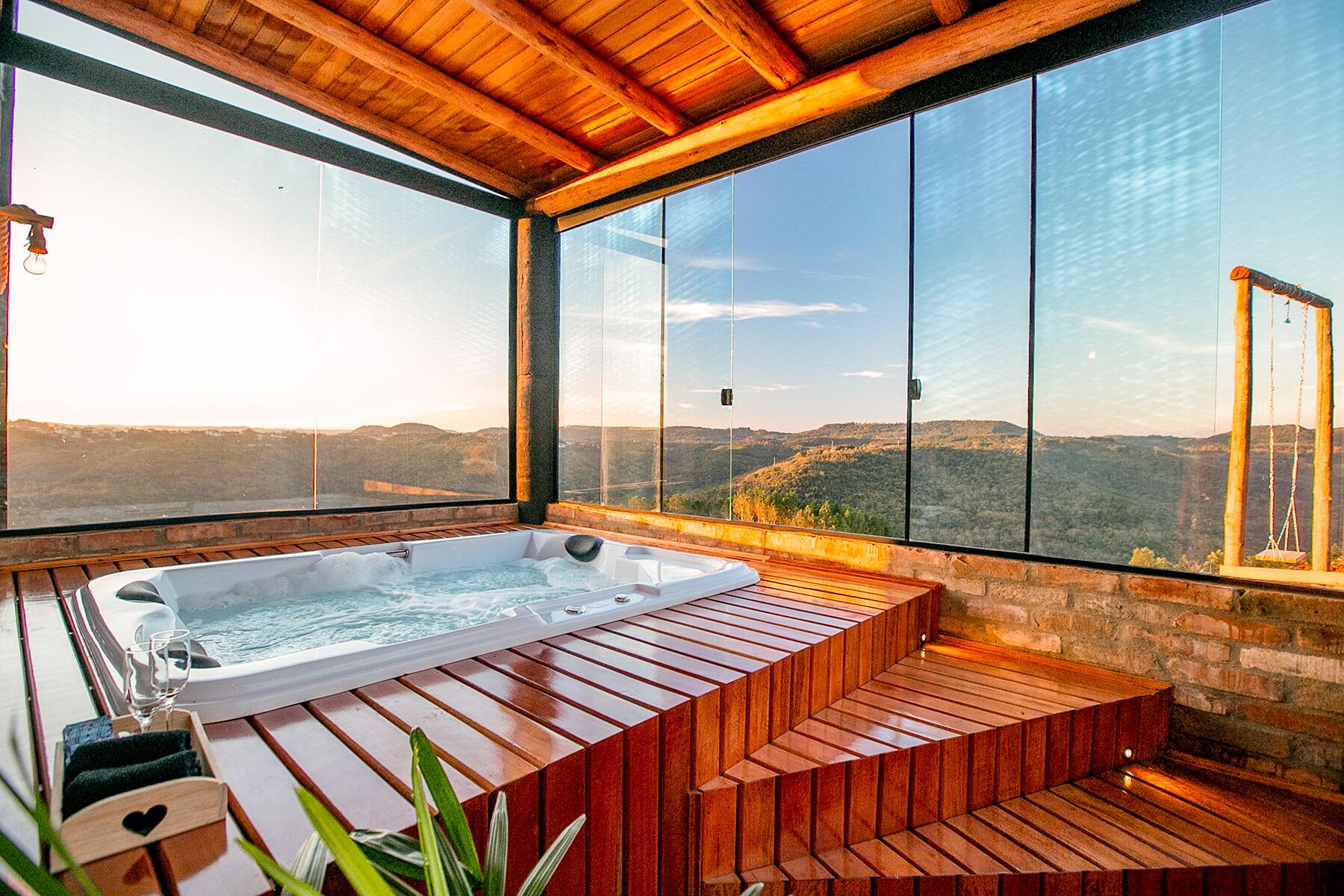In Vietnam, an abandoned university-turned-beachfront hotel seems to be a shining example of the country’s colonial past—except that its history is entirely made up.
Gracing the southern tip of Vietnam’s Phu Quoc Island is Bai Khem, one of the tropical haven’s most alluring beaches. Here, a thicket of palm trees bows to a cerulean sea as it tenderly laps a crescent of dimpled sand. Hills canvased in the jungle rise behind cordial palms, leading to the island’s craggy interior.
At the bay’s southern edge sits the pineapple-yellow and aquamarine Université Lamarck, which recently went through one of Vietnam’s most ambitious restoration processes. After years spent pouring over historical records, the abandoned institution was revamped as the JW Marriott Phu Quoc Emerald Bay Resort & Spa, a mouthful to say, but arguably the island’s most luxurious hotel.
“What was once a 19th-century French university has been reimagined as an eclectically-themed, lavish beachfront playground,” boasts the hotel website. With towering mashrabiya panels, elaborate wall carvings, and a handsome clocktower, the university is indeed an extraordinary example of colonial architecture and landscaping—or so the hotel would have you believe.
Recommended Fodor’s Video
The real story? Université Lamarck never existed. Californian architect Bill Bensley, a Southeast Asia-based resort mastermind, dreamt up the institution to embellish his colonial revival design concept. The French never constructed an elaborate university on Phu Quoc.
A Hotel With a Fabricated Past
This falsification of the hotel’s history is a “big mistake,” says Nguyen Tran Trong Nghia, a Ho Chi Minh City-born architect and co-founder of Architecture Excursions, a community of heritage enthusiasts. “The promotion materials are guilty of distorting the definition of architectural heritage and deliberately commercializing what we understand as a legacy.”
Nguyen is concerned that this distortion may have broader implications. According to him, architecture with no historical value is alien to the Indigenous inhabitants and has no place in the community. Projects like the Université Lamarck can deceive the public into thinking that this is an authentic piece of Vietnam’s history, creating confusion that may have consequences on genuine heritage preservation.

“It creates a premise for the commercialization of real architectural heritage by intentionally restoring the original disrespectfully in order to make it easier to make money from it.” But was Bensley’s intention to convince guests that the university actually existed?
“Absolutely, that was the intention,” says Bensley. “The key to good storytelling is weaving the DNA of a university into every aspect of the hotel, starting with the architectural vernacular and following through to the signage, uniforms, and the detailing of the interiors.” Is this good storytelling, though? Did Tolkien wish us to believe that a land populated with hobbits and elves was real? Did the Jedi actually overthrow a galactic empire a long time ago in a galaxy far, far away?
In any case, the commitment to the concept is impressive. At check-in, guests receive their university schedules, including chemistry (cocktail mixology) or home economics (lantern making). Then a staff member in colonial-era garb directs them to their swanky suites in one of the various bogus university departments. Good students adhere to the class schedule, but the unscholarly can bunk off and head to the physical education department for a few loops of the campus racetrack. Or they can simply head to the beach for a perennial—but comparatively dignified—spring break.
Apparently, this deception has been at least somewhat successful. “I thought that [the hotel] was based on a true story, but then I was told later that it wasn’t real,” says Kevin Duy Anh, who lives in Ho Chi Minh City and has stayed in the JW Marriott twice, most recently in early 2021. “It was a bit confusing, to be honest. I don’t really know if there was a university there before or not.”

Others knew that the story was false but still appreciated the effort. “The hotel transfers you to a whole new world, and it’s fun to tell your kids stories as you walk through it,” adds Thanh Le, a Hanoian that has visited a handful of times with her family, most recently in January 2020. “I know it’s not a real university campus. I think it’s inspired by one in the USA or something.”
Representatives from JW Marriott Phu Quoc Emerald Bay Resort & Spa have declined to comment on this story.
Eclipsing Phu Quoc’s History
“Apart from the fact that [the hotel] misleads potential visitors, the real pity is that the tourist juggernaut has shown no interest whatsoever in Phu Quoc’s real history and heritage,” says Tim Doling, a Ho Chi Minh City-based historian and author of an anthology of books that explore Vietnam’s layered past.
Doling laments that there seems to be no apparent reference to what makes Phu Quoc historically significant, such as jet stone mines, pepper and vanilla plantations, coconut farms, and the island’s vernacular architecture. There are also storied elements of the island’s history, such as when it served as a refuge to the exiled lord Nguyen Phuc Anh in the 18th-century. From Phu Quoc, he plotted a successful takeover of Vietnam, became Emperor Gia Long, founded a new capital in Hue, and established a royal dynasty that would last for almost 150 years.
A closer examination of Phu Quoc’s history also reveals some unpleasant truths. “The hotel is inappropriate and insensitive,” says Bien Nguyen, a Hanoian that visited Phu Quoc in June 2021 but decided on principle not to stay at the JW Marriott. “Nearby is the Phu Quoc Prison, where Vietnamese people were killed by the French during the colonial era and then America-backed South Vietnam during the war. And here we have an American glamorizing French colonial history.”

The Phu Quoc Prison, set up by the French in the mid-20th century and now a museum, is a gruesome affair and “living evidence of the ruthless crimes of colonial and imperial aggression,” according to the museum website. Visitors learn how inmates reportedly suffered the most horrendous torture, including teeth pulling, blinding by headlights, and death by oven (though the accuracy of this information is disputed). And yet, it’s a five-minute drive from the JW Marriott, a whimsical celebration of the colonial impact on the country.
The rejection of Phu Quoc’s history and heritage is a common trend on the island. While the JW Marriott’s story has little to do with Phu Quoc, other property designs have nothing to do with Vietnam. Phu Quoc United Center, a colossal entertainment complex, has a sickly replica of Venice’s Grand Canal, with terraced pastel houses and bow-shaped bridges in the north of the island. In the southwest sits the Sun Premier Village Primavera, seemingly modeled on a quant Italian coastal town.
“What a pity that most visitors to the island will never get the chance to learn about its real history,” says Doling.



